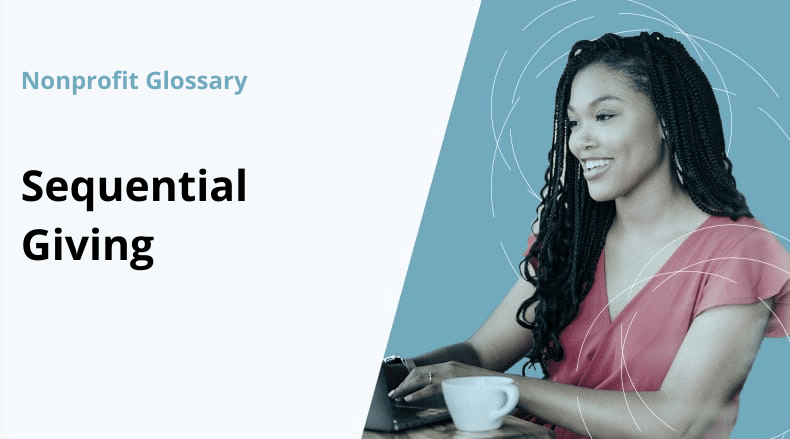Sequential Giving

Sequential giving, or sequential fundraising, is the process of starting to solicit top donors with connections to the organization and working your way down the list to new small givers. This method uses a top-down, inside-out approach to soliciting gifts for a campaign.
What is sequential giving?
Sequential giving or sequential fundraising is the process of grouping donors based on their giving potential and starting with the top of the list when soliciting gifts. In this way, you receive your biggest gifts first, which helps you determine your ability to meet your campaign goals.
However, beyond just a top-down approach, sequential giving also uses an inside-out approach. This means that you not only start with potential donors most likely to give large gifts, but you also start with donors already connected with your organization before you start tracking potential new targets. This may mean a volunteer or past donor who has already shown an interest in your cause.
In other words, you start with the people most likely to give you a big gift, and then you work your way down to new targets for small gifts.
What are the benefits of sequential giving?
According to the founder of the Fund Raising School at Indiana University Center on Philanthropy, a campaign’s “ten largest gifts set the standard for the entire campaign.”
This means that you can see a campaign’s likelihood of success by monitoring the success of big donor drives. Thus, using sequential giving allows the organization to have a better insight into how a campaign is doing.
On top of this, it is much harder to offset a lack of big gifts by increasing small donations, which means if the drive doesn’t work at the higher end, it’s not likely to work at all. Starting from the bottom and working up can disguise problems that will come back later.
More to the point, though, the people most likely to give are those donors with a connection to the organization (inside) who have a lot of means (top). Thus, using sequential giving allows campaigns to start off strongly, which adds motivation and appeal both to the campaigners and to future donors.
How does sequential giving work?
Sequential fundraising requires some planning. To start, create a list of donors classified by both future giving potential and connection to the organization.
- The top of the list should include potential givers who are both connected to you and most able to give.
- On the inside list, go down the categories until the lowest levels are reached.
- Now, start with the highest potential new donors and work down until all levels are reached.
Bottom line
Sequential giving helps you determine the viability of your campaign by focusing on big gifts from insiders first and then supplementing these as you work your way toward smaller gifts from new donors. It may not be right for all campaigns, but for bigger projects, it’s a good place to start.
Related resources:
- JGA: Capital Campaigns and Sequential Fundraising
- Harvard: Seeds to Succeed? Sequential Giving to Public Projects
- Pittsburgh University: The Informational Value of Sequential Fundraising